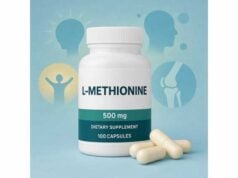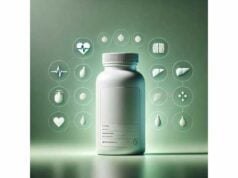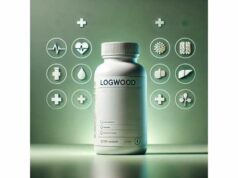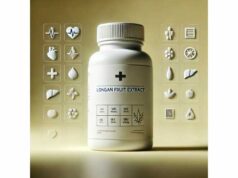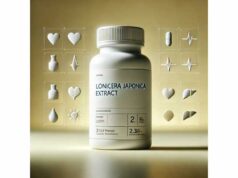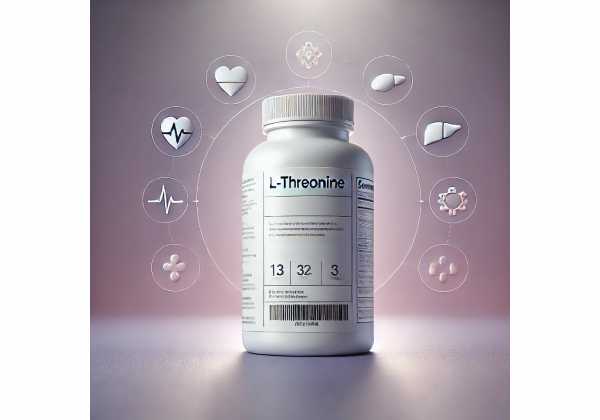
L-threonine (often shortened to threonine) is one of the nine essential amino acids your body cannot make on its own. You get it from food proteins and, in some cases, from supplements. Because threonine is abundant in mucin (the protective gel that lines your gut), and is built into structural proteins and enzymes throughout the body, it is closely tied to digestive barrier integrity, immune balance, wound repair, and overall protein turnover. Emerging human research has also begun setting modern safety boundaries for single-amino-acid supplements, including threonine. Practically, most people meet their daily needs through protein-rich foods; targeted supplementation may be considered when diet is limited, needs are higher (for example, during injury recovery), or formulation goals are specific (such as combining threonine with other amino acids in medical nutrition products). This guide translates the science into clear next steps—what threonine does, where it helps, how to use it, and when to avoid it—so you can decide whether it fits your goals and discuss it well with a clinician.
Quick Overview
- Supports gut barrier and immune function by fueling mucin production and protein synthesis.
- May aid recovery and tissue maintenance when dietary protein is marginal or needs are elevated.
- Typical supplement use: 500–1,500 mg/day; dietary requirement from foods ≈ 15–20 mg/kg/day.
- Safety note: high intakes can cause gastrointestinal discomfort; long-term high doses are not advised without supervision.
- Avoid or use only under specialist care in kidney disease, pregnancy, or rare organic-acidemia disorders.
Table of Contents
- What is L-threonine and how it works
- Evidence-based benefits you can expect
- How to use L-threonine day to day
- How much L-threonine per day?
- Side effects, interactions, and who should avoid
- What the research says
What is L-threonine and how it works
Threonine is an essential α-amino acid found in dietary proteins (meat, fish, dairy, legumes, eggs, soy). Essential means you must obtain it from food because the human body cannot synthesize it. In tissues, threonine is incorporated into new proteins and serves as a precursor or partner in several metabolic pathways:
- Mucin production and gut barrier: Mucins are heavily threonine- and serine-rich glycoproteins that form the protective mucus layer of the gastrointestinal tract. Adequate threonine availability supports mucin synthesis, the integrity of tight junctions, and secretory IgA activity—mechanisms that collectively help keep the gut barrier resilient and responsive.
- Protein maintenance and repair: As a constituent of structural proteins (including enzymes and extracellular matrix components), threonine contributes to tissue turnover, collagen-rich wound repair, and muscle protein balance. While leucine is the best-known trigger of muscle protein synthesis, threonine remains necessary to complete the amino-acid “build list” for new proteins.
- Immune cross-talk: Immune cells ramp up protein synthesis during activation. By supporting mucosal immunity and supplying substrate for rapidly dividing cells, threonine influences the balance between defense and inflammation, especially at barrier surfaces.
- Metabolic flexibility: Threonine interconnects with serine and glycine metabolism. These links matter for one-carbon pathways, antioxidant defenses, and the synthesis of key compounds. In simple terms: enough threonine helps keep cellular “housekeeping” running efficiently.
In a well-planned diet, threonine arrives as part of complete proteins. Supplementation is considered when dietary intake is low, when therapeutic formulas are used (medical nutrition, sports, or perioperative recovery), or when clinicians aim to tweak mucosal or immune support with targeted amino-acid blends. As with all single-amino-acid supplements, context matters: the body uses amino acids as a coordinated team, so balance with total protein quality and quantity is key.
Evidence-based benefits you can expect
1) Gut barrier integrity and comfort. Because mucins are threonine-dense, this amino acid is a practical lever for maintaining the mucus layer that protects epithelial cells from friction, acid, digestive enzymes, and microbes. In settings where protein intake is marginal—restricted diets, illness, appetite loss—threonine sufficiency helps sustain mucin turnover. People often notice benefits indirectly: steadier digestion, fewer “reactive” days after dietary slips, and improved tolerance to fiber ramp-ups.
2) Support during tissue repair and recovery. Injury, surgery, and training stress increase total protein needs. Threonine contributes to new protein assembly during recovery, complementing other essentials (particularly leucine, isoleucine, valine, lysine). Ensuring enough threonine in the daily protein pattern helps avoid bottlenecks in repair, especially when appetite is reduced.
3) Immune and mucosal defenses. Mucosal immunity relies on a healthy physical barrier plus targeted secretions like secretory IgA. Threonine helps keep the mucus barrier thick and functional, which indirectly supports balanced immune surveillance. In illnesses where intake falls, protecting mucosal surfaces becomes even more important.
4) Formulation synergy. Threonine is commonly included in specialized formulas (oral nutrition supplements, recovery drinks, medical nutrition) not as a standalone “performance” agent but as a keystone essential that ensures the total amino-acid profile matches human needs. In certain clinical blends, pairing threonine with other nutrients (for example, iron with sulfur-containing amino acids) has been explored to improve short-term biomarker responses.
5) General wellbeing when diet is limited. Individuals on restricted menus—selective eating, post-operative diets, or vegan diets with low total protein—may benefit from strategically topping up essentials, including threonine, to hit per-kilogram targets without large volumes of food.
What threonine is not: a stimulant, sedative, or magic bullet for muscle gain on its own. Gains in strength or tissue mass primarily follow from overall protein adequacy, energy balance, progressive training, sleep, and time. Threonine’s value is ensuring that essential-amino-acid balance is not the limiting factor within that bigger plan.
How to use L-threonine day to day
If your daily protein intake is robust and varied, you probably meet threonine needs through food. Consider a supplement only when there is a clear purpose:
- You are struggling to meet protein goals. For example, during illness recovery, dental procedures, or appetite dips. Threonine can help “complete” low-volume protein snacks (e.g., pairing with whey, soy, or collagen-forward mixes that may be low in specific essentials).
- You are focused on gut comfort while dieting. When calories drop or fiber climbs, some people develop gut sensitivity. Ensuring sufficient threonine—via food or a modest supplement—supports mucin turnover during those adjustments.
- Your clinician recommends a tailored blend. In medical nutrition or perioperative care, threonine is part of prescriptive essential-amino-acid formulas. Follow the exact plan given.
Practical patterns that work:
- Food-first approach: Aim for complete protein at each meal (20–40 g high-quality protein). Foods naturally rich in threonine include eggs, dairy, poultry, fish, and soy. Mixed-meal variety covers bases without tracking micro-targets.
- Supplement “top-up”: If using a standalone L-threonine powder or capsule, common personal-use ranges are 500–1,500 mg/day, split once or twice. Start at the lower end for one to two weeks and adjust only if a clinician agrees there’s a clear rationale.
- Blend strategy: Many people prefer a balanced essential-amino-acid mix (or simply protein powder) over single-amino-acid dosing. This approach avoids imbalances at transporters in the gut and at the blood–brain barrier and tends to be easier on the stomach.
Timing tips:
- Take with meals or a protein snack; this improves tolerance and supports integrated protein synthesis.
- If your goal is gut comfort during a fiber increase, place the dose with the higher-fiber meal.
- For recovery days with small appetites, use small, frequent protein servings rather than a single large bolus; let threonine “ride along” in those servings.
What to expect: Benefits are subtle—steadier digestion, easier recovery from higher-fiber meals, and support of general protein adequacy. If you notice no difference after 3–4 weeks and your overall diet is already strong, you may not need a separate threonine supplement.
How much L-threonine per day?
From foods (daily requirement): International authorities estimate adult threonine needs in the ballpark of 15–20 mg per kg body weight per day from mixed dietary proteins. For a 70-kg adult, that’s roughly 1.1–1.4 g/day arriving as part of normal food protein. Most people easily surpass this when eating adequate, varied protein.
From supplements (typical use): For general nutrition support, a common supplemental “top-up” is 500–1,500 mg/day. This is not a formal recommended intake; it reflects practical doses used to nudge mucosal or total essential-amino-acid balance when diet is constrained. Larger amounts should be reserved for clinical contexts.
Upper-intake context and safety boundaries: Modern human studies have begun quantifying safe ranges for individual amino acids. For threonine, short-term, graded dosing in healthy adults identified a no-observed-adverse-effect level (NOAEL) around 12 g/day under controlled monitoring. That value is not a target or a daily goal—rather, it shows that modest supplementation sits far below levels where consistent adverse effects appeared in supervision. Outside of trials, long-term high doses are not advised.
When needs may rise:
- Recovery from injury, surgery, or pressure ulcers
- Diets with reduced total protein or lower protein quality
- Older adults who struggle to reach per-meal protein “thresholds”
- Periods of high training load when appetite is limited
When to hold steady or avoid adding more:
- If you already meet or exceed total daily protein goals from food
- If you have kidney disease, chronic liver disease, or a diagnosed disorder of organic acid metabolism (use only with specialist guidance)
- During pregnancy or lactation unless your clinician specifically recommends a formula
A simple check: calculate your protein intake first. If you routinely hit 1.2–1.6 g protein/kg/day from good-quality sources, you are likely covering threonine needs without a separate product.
Side effects, interactions, and who should avoid
Common, usually mild effects at higher intakes:
- Nausea, stomach upset, bloating, or loose stools
- Headache or fatigue in sensitive users
- Transient changes in plasma amino-acid patterns (expected when taking any single amino acid), usually without clinical consequence in healthy adults
Potential interactions and nuances:
- Amino-acid balance: Single amino acids can compete at transporters in the small intestine and at the blood–brain barrier. Taking threonine with meals or as part of a balanced essential-amino-acid blend reduces this concern.
- Protein-first principle: If a supplement displaces real food protein, you may worsen overall amino-acid balance. Prioritize complete foods, then consider threonine as a small, specific add-on.
- Formulation synergy: In some contexts, combining amino acids with micronutrients (for example, pairings with iron) has been studied for short-term biomarker improvements. These blends should be clinician-directed.
Who should avoid or use only with medical guidance:
- Kidney disease (any stage): Protein and amino-acid prescriptions should be individualized; do not add isolated amino acids without nephrology input.
- Liver disease: Metabolism of nitrogenous compounds may be altered; use only under supervision.
- Pregnancy or lactation: Safety data for long-term single-amino-acid supplementation are limited; rely on dietary proteins or clinician-designed formulas.
- Inborn errors of metabolism (e.g., propionic or methylmalonic acidemia): Amino-acid handling is compromised; follow a specialist plan.
- Children: Use only in clinically prescribed formulas; do not give standalone threonine casually.
Stop and reassess if you notice: persistent gastrointestinal distress, unusual fatigue, new neurological symptoms, or any lab abnormalities your clinician flags while you are supplementing. As with all nutrition changes, discuss threonine with a qualified professional if you have medical conditions or take prescription medications.
What the research says
Dietary requirements and balance. Foundational reports that set amino-acid requirements agree that adults need only small absolute amounts of each essential amino acid when total protein is adequate and varied. Threonine’s requirement lands near 15–20 mg/kg/day from foods, which normal eating patterns typically meet. In practice, the pattern of intake—getting enough complete protein across meals—matters as much as the daily total.
Mucosal and immune mechanisms. Contemporary reviews emphasize threonine’s outsized role in mucin biosynthesis and intestinal immune function. Because mucins are enriched in threonine and serine residues, low threonine intakes can become a rate-limiting step for mucus turnover, with downstream effects on barrier integrity and local immunity. This mechanistic link explains why threonine is common in medical nutrition formulas for gut support.
Human safety data for supplements. A recent randomized, double-blind, crossover trial in healthy adults explored multi-week graded threonine dosing and identified a NOAEL around 12 g/day under supervision, with adverse events mild and transient. Separately, narrative and quantitative reviews across multiple amino acids propose structured approaches to establishing tolerable upper intake levels for individual amino-acid supplements. The take-home: modest, food-complementing doses sit well below thresholds associated with consistent adverse effects, but routine high-dose, long-term self-supplementation is not warranted.
Clinical niches and formulations. In specific settings—perioperative nutrition, disease-related malnutrition, recovery from pressure injuries—clinicians often use balanced essential-amino-acid blends or high-quality protein supplements where threonine is proportionate to physiological needs. Outside such contexts, focusing on total diet quality remains the highest-value move.
Bottom line: For most healthy people, eating sufficient high-quality protein is the most reliable way to meet threonine needs and capture its benefits for gut, immune, and tissue health. A small supplemental “top-up” can be reasonable during short windows when diet is limited or needs are high, provided you keep doses conservative, take it with meals, and coordinate with a clinician if you have any medical conditions.
References
- Protein and amino acid requirements in human nutrition. 2007 (Guideline)
- Tolerable amounts of amino acids for human supplementation: summary and lessons from published peer-reviewed studies 2021 (Systematic Overview)
- Tolerable Upper Intake Level for Individual Amino Acids in Humans: A Narrative Review of Recent Clinical Studies 2023 (Narrative Review)
- Evaluation of safe utilization of l-threonine for supplementation in healthy adults: a randomized double blind controlled trial 2025 (RCT)
- Physiological Functions of Threonine in Animals 2021 (Review)
Disclaimer
This article is educational and is not a substitute for professional medical advice, diagnosis, or treatment. Always speak with your healthcare professional before starting, stopping, or changing any supplement, especially if you are pregnant or breastfeeding, have kidney or liver disease, or manage any chronic condition. If you experience adverse effects, discontinue use and seek medical guidance.
If you found this helpful, please consider sharing it with friends or colleagues on Facebook, X (formerly Twitter), or your favorite platform, and follow us for more evidence-based guides. Your support helps us continue creating high-quality resources.

